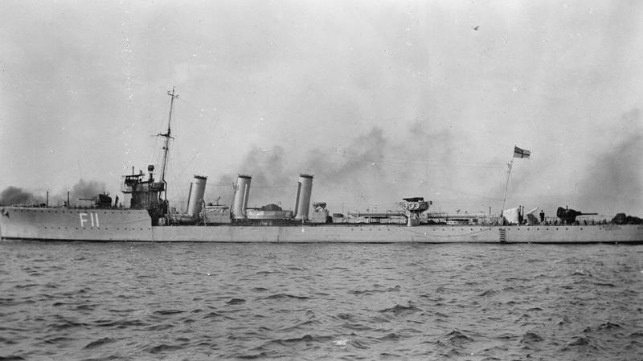Marking the Centenary of Fatal WWI Groundings

On January 12, the people of the Orkney Isles will pay tribute to 188 sailors lost a century ago when two destroyers were smashed against rocks. Just one man survived when HMS Opal and Narborough ran aground off South Ronaldsay in a snowstorm on January 12, 1918.
One hundred years to the day of the tragedy, Orcadians and representatives of today’s Royal Navy will pay their respects with a wreath-laying ceremony at the destroyers’ monument in Windwick Bay, before a memorial event and presentation in a public hall at St Margaret’s Hope.
The islands served as the principal front-line base for the Royal Navy in both wars with Germany, with the enormous natural harbour at Scapa Flow an ideal anchorage for capital ships.
The Germans tried to disrupt operations either by laying mines – such as those which sank the cruiser HMS Hampshire, carrying legendary war leader Lord Kitchener in June 1916 – or dispatching U-boats. It fell to smaller ships like Opal and Narborough to patrol the waters and hunt down any minelayers or submarines.
So bad was the weather on that fateful Saturday in 1918 that the destroyers were ordered back to base for fear of being swamped. Instead, they ran into the rocks in near-zero visibility. Some of the Opal’s crew were washed overboard, others were trapped in cabins and compartments unable to escape before the ship broke in two.
Gunner AB William Sissons managed to swim ashore and sheltered from the elements in a crevice. He almost managed to scale the cliff and reach safety, but fell back down through exhaustion and numbness. He was finally rescued by a trawler after about 36 hours, having kept himself alive on a diet of shellfish and snow.
As for the Narborough, she struck the rocks at speed and heeled over. No man escaped her.
“The tragedy that claimed the lives of the crews of HMS Opal and Narborough is a reminder that the sea can be a dangerous place and not just with the threat of enemy action,” said Capt. Chris Smith, RN Regional Commander for Scotland and Northern Ireland.
Many of those who died were never recovered, but the bodies of 55 were eventually interred at the Commonwealth War Graves cemetery at Lyness on the island of Hoy, overlooking Scapa Flow. Also recovered from the wreck site was a ring bearing the inscription: To Stanley from Flo – 6 March 1916. It had been given as an engagement present to Stanley Cubiss, who served in the engine room aboard HMS Opal, saw action at the Battle of Jutland and had been married for less than a year when he lost his life. It – and other artefacts recovered from the two ships – can be seen in a temporary exhibition at the Orkney Museum in February.
The opinions expressed herein are the author's and not necessarily those of The Maritime Executive.
